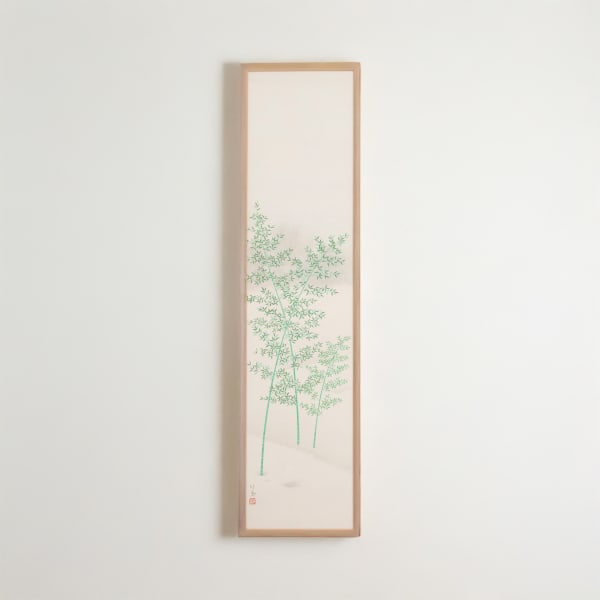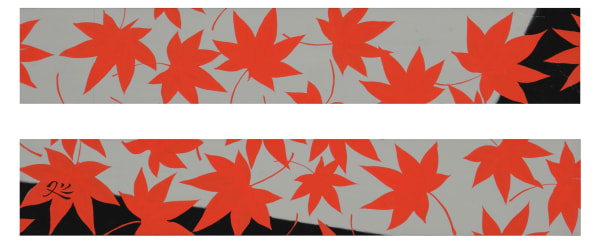-
NIHONGA: Neo-Japonisme
· · ·
JOINT EXHIBITION
AT
October 16-20, 2024
11am−8pm
-

-
Nakamura Masayoshi (1924–1977)
Nakamura Masayoshi underwent right thoracoplasty surgery in 1953, followed by left thoracoplasty in 1956, resulting in the loss of eight ribs. During these surgeries, Nakamura’s style also underwent a transformation, and the world he depicted changed dramatically. From the urban landscapes he had previously painted, he began creating Trees while riding the Iida Line through mountainous areas, and Hills along roads. Around 1969, winter tree scenes became more prevalent in his work. Woods is a piece depicting cherry blossoms beginning to bloom, covered in accumulated snow.
-
Kayama Matazō (1927–2004)
These are all original illustrations used by Japanese publishing company, Bungeishunjū.
The four pieces Peony, Bird, Camellia, and Iris are part of the illustrations for Enchi Fumiko's novel, The Waiting Years, published in 1968 in Modern Japanese Literature Series 40: Enchi Fumiko and Koda Aya. These illustrations added further depth to Enchi's masterpiece, which is regarded as a pioneering work of post-war Japanese women's literature.
Autumn Leaves was used in the table of contents of the monthly magazine published by Bungeishunjū. Grass on a Moonlit Night was likely used around the same time.
-
Kitagami Seigyu (1891−1970)
Flowers and Grasses of the Four Seasons, made during the Muromachi period (1336-1573), follows paintings traditions of East Asia, depicting familiar motifs such as landscapes of the four seasons and bird and flower paintings. Seasonal paintings gained further popularity during the Edo period as a favored subject of the Rinpa school, one of the traditional schools of Japanese art. The folding screen featured here, which continues the tradition of incorporating seasonal elements into indoor spaces, depicts seasonal flowers on screen panels with a delicate and intimate sensibility, an embodiment of living in harmony with nature.
-
-
























